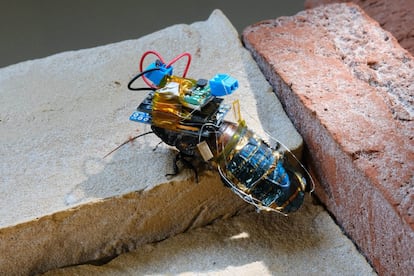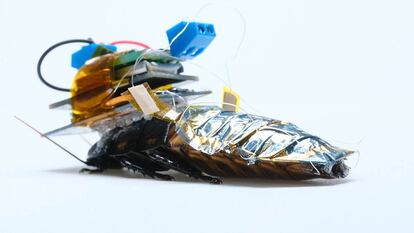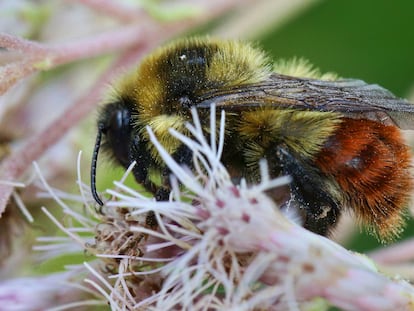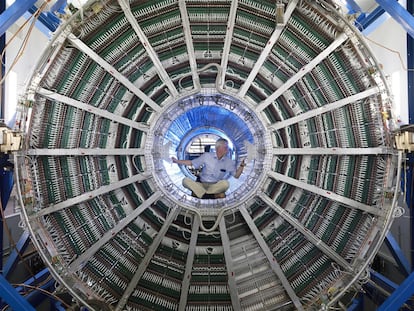Cyborg roaches may be able to save lives after earthquakes
An international team of scientists created a solar charger to remotely control insects searching for people buried under the rubble
It’s probably unrealistic to think that cockroaches and people could ever become friends. But some of their more unpleasant abilities, such as being able to squeeze through tiny cracks and survive in almost any environment, made them the insect of choice for rescue missions.
A cyborg cockroach is a hardwired biological insect that can be controlled remotely by a human operator. Such an invention could be used to inspect hazardous areas, monitor the environment, and even identify people buried under rubble. But to make this a reality, one needs the ability to guide the insect remotely over a sustained period. Wireless control of the insect’s legs is needed, as well as an onboard battery to power the system. The first challenge has already been solved, and now an international team led by researchers from the Japanese RIKEN Cluster for Pioneering Research (CPR) has just created a device that uses solar power to recharge the battery.
The team led by Kenjiro Fukuda designed a special backpack that carries ultra-thin (0.004 mm), flexible organic solar cell modules that adhere to the insect’s body without hindering its natural movements. This enables deployment of remote-controlled cockroaches on search missions in inaccessible or dangerous places without having to return to docking stations for recharging. The most important immediate application of this technology is in rescue missions, such as building collapses where people buried under the rubble cannot be reached.
The study published in Nature indicates that the Madagascar hissing cockroach species were used because of their relatively large size (5-7 cm), which is enough surface area to integrate the small solar cell and control backpack. This species cannot fly, so it is easier to track. Fukuda told EL PAÍS that insect doesn’t have to wear the extra baggage forever. “We can remove the device after the mission so the insect can resume a normal life.”

Are we closer to having the ability to control other animals? Fukuda says that this depends on whether it feels pain. Insects don’t feel pain, so “there is no need for ethical approval.” But when it comes to other living things like mammals, the application of this type of technology triggers a complex debate. “That would be a problem because they do feel pain,” said Fukuda. But this battery-recharging mechanism can also be used with other cyborg insects, such as bees.
Nevertheless, the circuit control system still needs to be optimized so that the insect can efficiently switch between “recharge” and “mission” mode. “We need to guide the insect to sunlight before the battery runs out. Then, after recharging, we need to switch back to mission mode so that it restarts the rescue route. That’s the problem we’re tackling in the next phase of research,” said Fukuda, who anticipates being able to deploy cockroaches on mission in three to five years.
Tu suscripción se está usando en otro dispositivo
¿Quieres añadir otro usuario a tu suscripción?
Si continúas leyendo en este dispositivo, no se podrá leer en el otro.
FlechaTu suscripción se está usando en otro dispositivo y solo puedes acceder a EL PAÍS desde un dispositivo a la vez.
Si quieres compartir tu cuenta, cambia tu suscripción a la modalidad Premium, así podrás añadir otro usuario. Cada uno accederá con su propia cuenta de email, lo que os permitirá personalizar vuestra experiencia en EL PAÍS.
¿Tienes una suscripción de empresa? Accede aquí para contratar más cuentas.
En el caso de no saber quién está usando tu cuenta, te recomendamos cambiar tu contraseña aquí.
Si decides continuar compartiendo tu cuenta, este mensaje se mostrará en tu dispositivo y en el de la otra persona que está usando tu cuenta de forma indefinida, afectando a tu experiencia de lectura. Puedes consultar aquí los términos y condiciones de la suscripción digital.












































